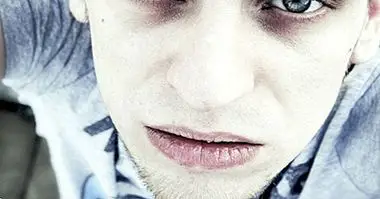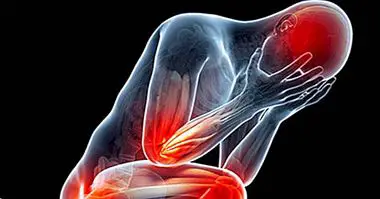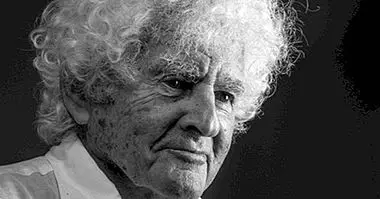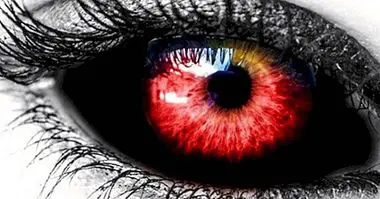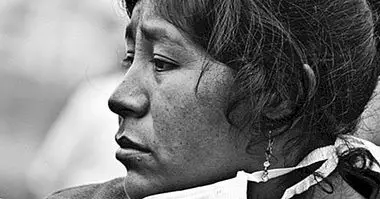Epistaxyophobia (phobia of nosebleeds): symptoms, causes, treatment
The world of phobias always involves very specific problems that, despite affecting very few people, can become real nightmares. The case of epistaxiofobia is an example of this, since in it, what produces intense fear is something that is not usually among our usual concerns, nosebleeds, or nosebleeds.
In this article we will see what is epistaxiofobia , what are its symptoms and causes, and in what way do psychologists intervene in this class of disorders through psychotherapy.
- Related article: "Types of phobias: exploring the disorders of fear"
What is epistaxyophobia?
As we have seen in advance, epistaxyophobia can be summarized as extreme fear of nosebleeds, usually own .
Of course, for it to be an authentic phobia, this alteration has to be intense and persistent enough to significantly damage the quality of those who suffer this kind of experience. How is this determined? The person who experiences these fear or anxiety crises can decide if that experience makes them more unhappy or not, but ultimately it is the mental health professionals who make the diagnosis.
On the other hand, in the diagnosis this kind of experiences do not have an official name, given that there is a virtually unlimited amount of phobias , and that is why many of them are included under the concept of specific phobia. This is also the case of epistaxiofobia.
- Maybe you're interested: "Blood phobia: everything there is to know about hematophobia"
symptom
Phobias are a class of anxiety disorders, and that is why most symptoms of epistaxyophobia are linked to this phenomenon. These symptoms can be divided into three types: physiological, cognitive and behavioral .
Among the physiological ones, we can highlight the acceleration of the respiratory rate, Increased blood pressure, tremors, nausea and dizziness , cold sweat and paleness.
On the other hand, in the symptoms of cognitive type is the idea of catastrophes (imagine the worst possible scenario) the inability to direct attention away from what is scary, and the belief that you are helpless in the face of danger.
Finally, the behavioral symptoms of epistaxiofobia are the flight and avoidance behaviors , that is to say, the actions directed to avoid the risk to a nose bleed or to expose that the rest of people see it.
Causes
As with all anxiety disorders of this type, epistaxyophobia does not have a single cause that is present in all patients with this phobia, but rather there is a multiplicity of factors that can lead to the development of this alteration .
It is very common to appear as a result of one or more traumatic experiences, lived with special intensity and that have been able to leave an important mark on the emotional memory of the people.
It is also possible that in a relatively large proportion of the occasions when a nosebleed has occurred, something bad has happened, which helps to stop seeing these experiences as something neutral beyond the inconvenience of losing blood through the nose. for a moment.
On the other hand, social pressure and the possible loss of acceptance on the part of others they can be oversized and constitute the main source of fear.
In any case, both in this and in the rest of the phobias one of the aggravating factors of the anxiety crises experienced by this alteration is the prediction that the symptoms of the phobia will manifest themselves. That is the existence of the disorder feeds itself , creating a vicious circle capable of making that no matter how long the years go, everything remains the same.
Treatment of this disorder
The epistaxiofobia does not have a specific treatment, but it applies the same procedures used in most phobias: exposure, systematic desensitization and cognitive restructuring . Of course, in this case it is complicated to cause true hemorrhages, so that they are simulated (or else you work with exposure through imagination).
The idea is to make the person get used to exposing himself to what he fears in a controlled environment, under the supervision of the therapist and following a curve of ascending difficulty that prevents the patient from getting frustrated. In this way, the person gets used more and more to face what causes him fear, and seeing that nothing bad happens as it is a controlled situation and an acceptable level of difficulty , progress is being made.
At the end of the treatment the symptoms will have diminished significantly, and although they probably will not disappear completely, they will cease to be a significant problem and prevent a normal life.
Bibliographic references:
- Bados, A. (2005). Specific phobias Faculty of Psychology. Department of Personalitat, Avaluació i Tractament Psicològics. University of Barcelona.
- Bourne, E. J. (2005). The Anxiety & Phobia Workbook. New Harbinger Publications.


